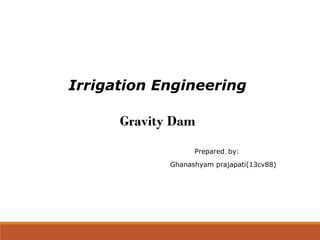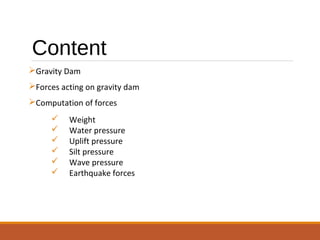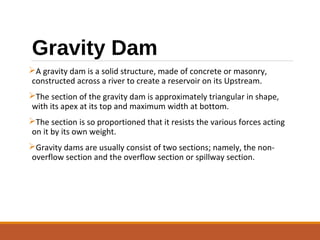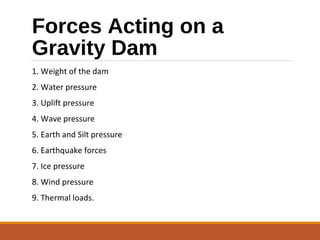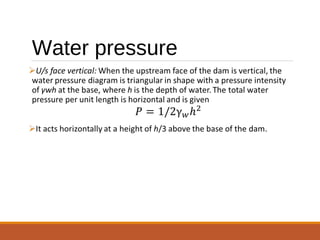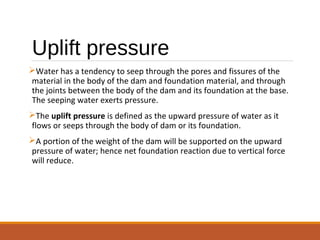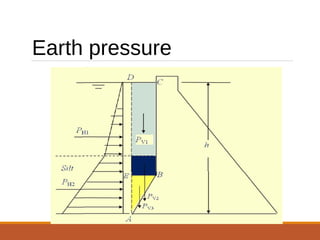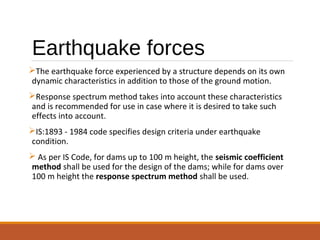This document discusses the key forces acting on a gravity dam, including its weight, water pressure, uplift pressure, silt pressure, wave pressure, and earthquake forces. It defines key terms like structural height, maximum base width, and hydraulic height. It also provides details on how to calculate or estimate the various forces, for example explaining that water pressure acts normal to the face of the dam and can be calculated based on horizontal and vertical components. Uplift pressure is defined as the upward pressure of water seeping through the dam or its foundation. Earthquake forces cause random vibrations that impart accelerations to the dam's foundation.
